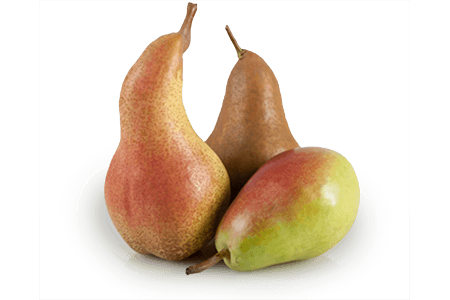Pears
How They Grow
- Sizes vary depending upon the variety: there are pears with yellow, greenish and pinkish skin and with juicy, white or yellow pulp.
- There are summer varieties (Williams, Guyot, Santa Maria, Red Williams) and winter varieties (Abate Fetel and Kaiser).
- In order to obtain a better quality of fruit, the plant is pruned at least once a year.
- The pear harvest occurs during the period between June and October. Jolife’s expert pear producers are always able to recognise the most opportune time for the harvest.
- Jolife pears are collected by hand, one by one.
Their benefits
- They are useful in lowering cholesterol levels, thanks to the high level of water-soluble fibres.
- Naturally rich in potassium and other mineral salts, vitamin C and vitamins B1, B2, PP.
- They refresh and perform a diuretic action.
- Rich in fibre, they increase the feeling of satiety and help to regulate the intestine.
- In order to reactivate the intestine, eat at least two fruits per day.
- Best consumed raw or used in fruit salad: long cooking times and high temperatures cause them to lose salts and vitamins.
| FATS | CHOLESTEROL | CALORIES | TOTAL FIBRE |
|---|---|---|---|
| 0 g/100g | 0 mg/100g | 35 kcal/100g | 3,8 g/100g |
Conservation
Once ripened, they can last a maximum of a week in the fridge, in the vegetable drawer. Unripe fruit can be stored at room temperature.
When you buy pears that are not yet ready to eat, store them in a paper bag at room temperature for 2-3 days: this allows the fruit to ripen perfectly.

